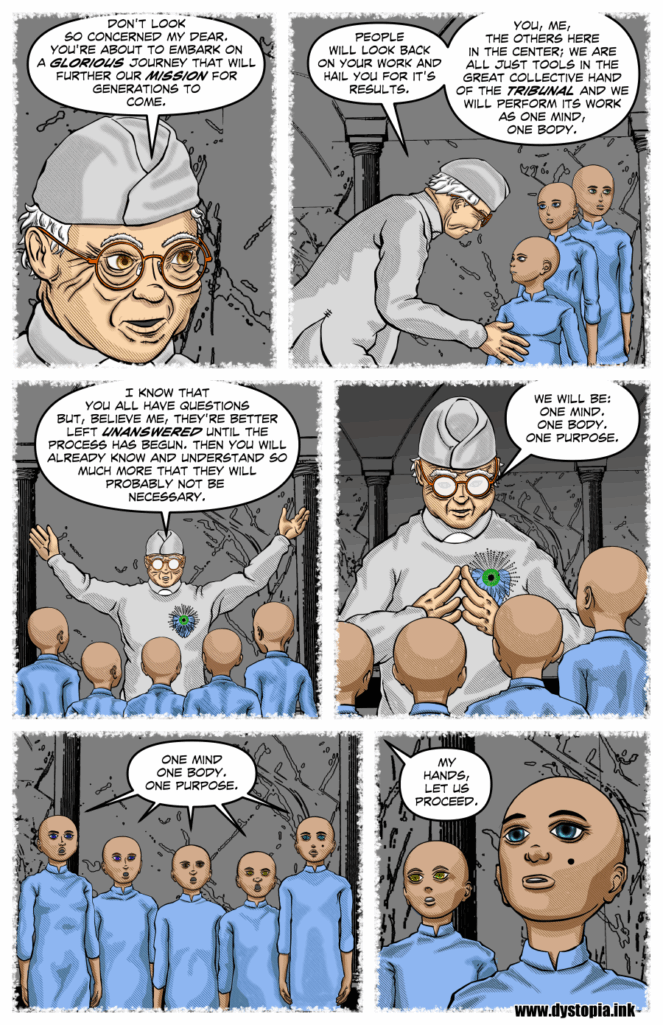Creative notes: This week’s page, Dystopia: Chapter 2 – Midwife, Aborted, Page 24, steps back in time with a haunting flashback that explores the origins of Angie’s indoctrination. The scene brings us inside the Tribunal’s stone-walled caverns — a simple, ritualistic space that merges scientific authority with religious reverence.
Designing the Counselor
The Counselor needed to embody both wisdom and quiet menace. From an artistic standpoint, his age was essential—he had to appear old enough to possess knowledge and authority, yet vigorous enough to lead this unsettling activity. The lines on his face, the slight stoop of his posture, and the calm steadiness of his gestures all suggest someone who has performed this ritual many times before. His ornamental robes and circular glasses were drawn to contrast with the smooth, blank youth of the girls he addresses—visual cues of both separation and control.
Identifying Angie
One of the challenges in this sequence was ensuring readers could easily identify Angie among the nearly identical girls. Her small facial mole, (as mentioned last week), continues to serve as the visual anchor. My take is that as individuality is being erased, that mark becomes symbolically precious: the last flicker of “self” before assimilation.
Composing the Scene
The panel borders were deliberately drawn with a ragged, irregular edge to evoke a “dreamlike” or “fractured memory” quality. This page is not happening in real time—it’s a recollection, filtered through Angie’s subconscious. The broken, uneven framing helps communicate that the reader is looking backward into a manipulated or incomplete version of the past.
Themes and Tone
From a storytelling perspective, Jackwraith's dialogue in this scene feels (to me) both intimate and institutional. The Counselor speaks with warmth (as they did in the hallway scenes with Angie and 8244), but his words carry the chill of indoctrination. The repetition of “one mind, one body, one purpose” functions like a prayer or programming command, reinforcing the story’s tension between faith and control.
The page closes on the line, “My hands, let us proceed,” marks a moment where things move from words to irreversible action.















